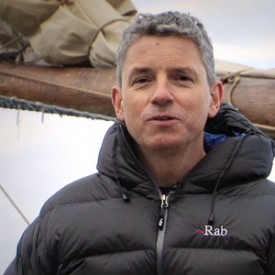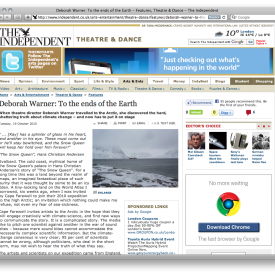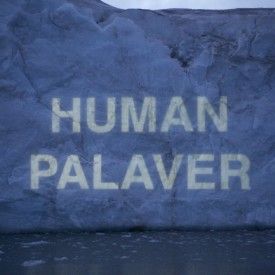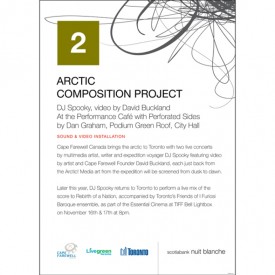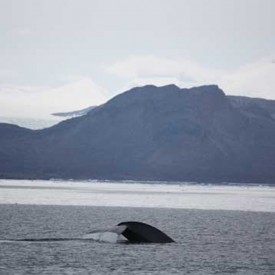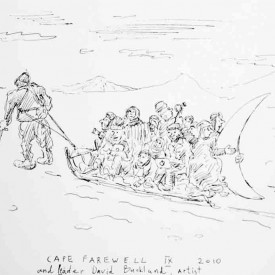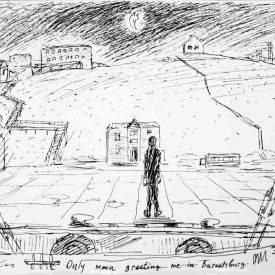It is traditional on all Cape Farewell cruises that the scientists on board endear themselves with the rest of the crew with the open ocean transect. It’s a chance for everyone to really get a feel for the gentle motion of a beam sea rocking them to sleep and to see the Noorderlicht in full sail – man (or woman!) and nature working together. That and a chance to start annulling the excess of food from Sonia’s galley and to see how well their laptops survive bouncing on the deck.
Tradition has it that we set off with a view to “a few hours, a day at most” approach and all gather with enthusiasm on deck. Then, as the first gentle waves begin, support for the science wanes until by day two the main question isn’t “how’s the West Spitsbergen current” but “when will be able to eat and work again”. On Monday we started a transect to measure the vertical temperature and salinity at various locations running100 nautical miles offshore towards Greenland. The aim was to observe how conditions have changed over the past 6 years, with the same data being gathered in Cape Farewell 2004 and 2007. Understanding climate change is all about measuring the change and the most valuable data for scientists are those that span many years – a few years is just weather, we really need tens of years to see climate trends.
At 0200 Tuesday we had successfully crossed the West Spitsbergen current (the tail end of the Gulf Stream extension) and turned back towards Longyearbyen. The return journey is proving slow as I write due to the wind veering against us but samples are still being made. The results in summary:
This ocean current, west of Svalbard, is like a wide deep river in the sea. It brings warm salty water which originates off Florida to replace surface water sinking in the high Arctic when ice forms in winter. In previous years it has been observed as a strong flow, about 50m deep (in thickness) and 80km wide. In previous years the peak of the flow has been hidden beneath a thin surface layer (20m) of cold fresh water from ice melt on Svalbard. This year that melt water was missing the West Spitsbergen current was all at the surface. The size and temperature of the flow haven’t changed noticeably but it is now all at the surface. Surely this is good news?! Doesn’t this mean that the glaciers are not melting as fast as they were? It would be good if this were the case, but I fear that analysis back in Southampton of recent satellite data will show that the lack of fresh water melt is more to fewer glaciers to rather than a slowing of the rate of melting. A 100 tonne block of ice will provide much more fresh water as it melts than a 1 tonne one. It is noticeable that around the fiords of Svalbard the levels of fresh water is going down and I have already commented on the sparseness of glaciers compared to 2004.
As land nears the eschewing of scientists eases and more people emerge from their cabins. The promise of a calm dinner probably means we will have to buy the wine tonight to restore our popularity and to be able to repeat this all again in years to come..
BACK TO TOP